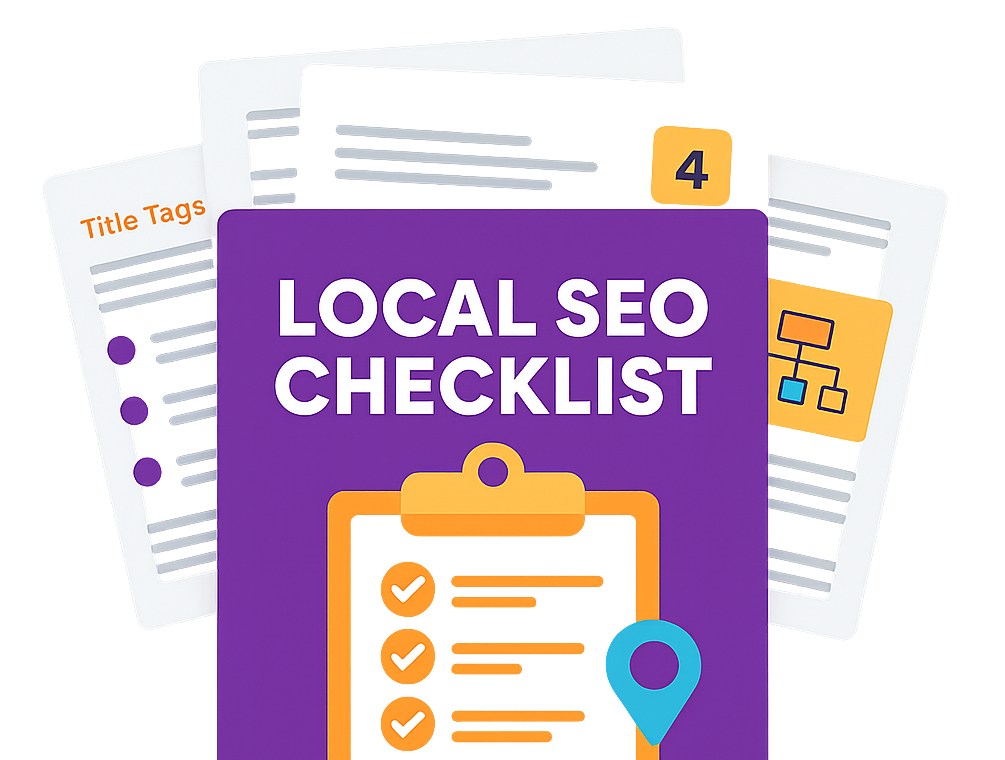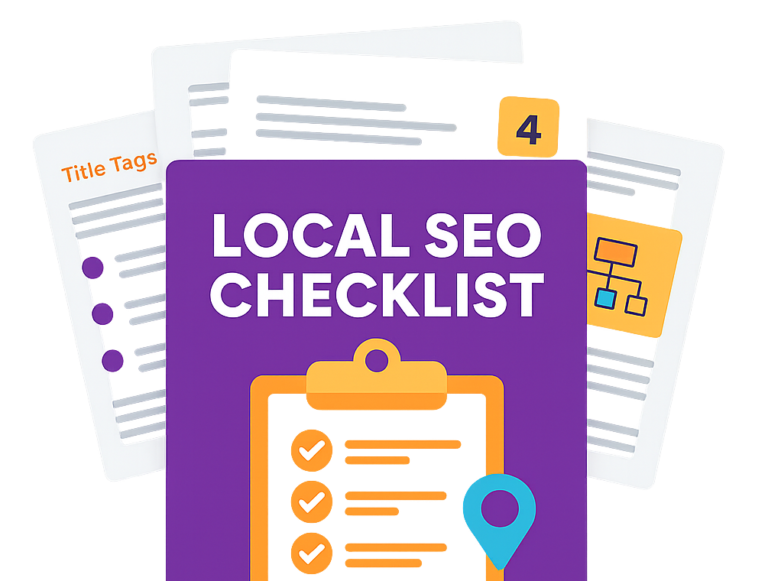In its simplest form, a long tail keyword is a very specific search phrase, usually three or more words long. Think of it as the difference between a vague window-shopper and a buyer with a mission. These longer queries show a user has a clear idea of what they want, which often means they’re much closer to making a purchase.
Decoding Long Tail Keywords

Imagine your SEO strategy is a fishing trip. You could cast a huge net in the middle of the ocean, hoping to catch whatever swims by. That’s like targeting a broad 'head' keyword like "shoes". You'll get tangled up in competition with massive brands, and most of what you catch won't be what you were looking for anyway.
Or, you could use specialised bait in a quiet spot where you know your target fish gathers. This is the magic of long tail keywords. A search like "men's waterproof hiking boots size 10 UK" isn't just a casual browse. It’s a direct request from someone who’s done their research and is probably ready to buy.
Why They Matter in Modern SEO
The real power of long tail keywords is their ability to connect you with a more qualified and motivated audience. While a single long tail phrase might not get a ton of searches on its own, their collective power is huge.
In fact, research shows that in the UK, long tail keywords make up about 70% of all online searches. This stat reveals a huge shift in how people search; they're using detailed, conversational phrases to find exactly what they need.
By focusing on these specific phrases, you sidestep the fierce competition for generic terms. Instead, you target users with clear intent, which leads to higher conversion rates and a much better return on your content investment.
This targeted approach doesn't just improve your chances of ranking. It also ensures the traffic you attract is far more relevant to what you actually offer. It’s a cornerstone of any smart SEO strategy, and it’s deeply connected to having a technically sound website. If you want to make sure your site is ready, our guide on conducting a technical SEO audit is a great place to start.
Long Tail vs Short Tail Keywords at a Glance
To really get to grips with this, it helps to see a direct comparison. Short tail (or 'head') keywords are the big, popular terms, while long tail keywords are the niche, specific phrases.
Here’s a quick table to break down the core differences between them.
| Characteristic | Short Tail Keywords | Long Tail Keywords |
|---|---|---|
| Length | 1-2 words (e.g., "bakery") | 3+ words (e.g., "vegan gluten-free birthday cake Cambridge") |
| Search Volume | Very high | Low (individually) |
| Competition | Extremely high | Low |
| User Intent | Broad, often vague | Specific, often transactional or informational |
| Conversion Rate | Low | High |
As you can see, while short tail keywords have the volume, long tail keywords have the intent and the conversions.
Understanding this distinction is the first step toward building a more effective, targeted SEO strategy that actually delivers meaningful results. You stop shouting into the void and start having conversations with the people who are actively looking for you.
Of course. Here is the rewritten section, crafted to sound completely human-written and natural, following all your specific instructions.
The Strategic Power of Long Tail Keywords in SEO
So, we know what long tail keywords are. But knowing what they are and knowing how to use them are two different things. This is where we move from theory to strategy.
Prioritising these super-specific phrases isn’t just some clever SEO trick; it’s a core part of any smart, modern search plan. It’s your best bet for sidestepping the brutal competition for generic terms while connecting directly with people who are ready to take action.
The biggest win? Dramatically lower competition. While everyone else is throwing money at broad terms like "jackets," the field gets a whole lot quieter when you focus on more specific searches. This is a game-changer for smaller businesses or niche brands, letting them get a real foothold and rank without needing a massive marketing budget.
You get to stop fighting for a tiny slice of the pie on a crowded search page and instead, become the number one answer for a question that perfectly matches what you do. It’s the classic case of working smarter, not harder.
From Vague Interest to High Intent
Think about the mindset behind a search. Someone typing "jackets" into Google is just browsing. They’re in the early stages, looking at different styles, maybe getting a few ideas. It's the online equivalent of window shopping—their intent is broad and informational.
Now, compare that to someone searching for "best waterproof running jacket for women UK". This person has a mission. They have a specific problem and are actively looking for the right solution. They’ve gone from the 'what if' to the 'which one' stage of their buying journey.
This distinction is critical. Traffic from high-intent long tail keywords is inherently more valuable because these users are much closer to making a purchase or taking a desired action, leading to significantly higher conversion rates.
This is also where your content plan comes into play. The power of long tail keywords is directly tied to effective content marketing. These phrases give you the roadmap to create focused articles, guides, and product pages that speak directly to these valuable, niche audiences.
Real-World Application: A Local Success Story
Let’s make this real. Imagine a small, independent bakery in Cambridgeshire. If they try to rank for the word "cakes," they’re up against national supermarkets, huge recipe sites, and big-name chains. It would be an expensive, uphill battle with little chance of success.
But what if this bakery has a speciality? By shifting their focus to long tail keywords, their strategy becomes much smarter.
- Broad Term: "cakes" (Extremely high competition, low buying intent)
- Long Tail Term: "vegan gluten-free chocolate birthday cake in Cambridge" (Very low competition, high buying intent)
By building a page optimised for that long tail phrase, the bakery is talking directly to a customer with a very specific, urgent need. When someone searches for that, they aren’t just looking for any cake; they want that exact cake, and they want to buy it locally. The odds of that search turning into a sale for the Cambridgeshire bakery are incredibly high.
Future-Proofing Your SEO with Voice Search
The way people search is changing, thanks to voice assistants like Siri, Alexa, and Google Assistant. We’re moving away from typing clunky keyword fragments and towards asking full, conversational questions.
Nobody picks up their phone and says "running shoes London" to a smart speaker. They ask, "Where can I buy discounted running shoes near me in London?"
This shift to natural language makes a long tail strategy more vital than ever before. These conversational questions are, by their very nature, long tail keywords. When you optimise your content to answer these specific questions, you’re perfectly aligning your SEO with the future of how people find information. It ensures your website stays visible and relevant as technology continues to evolve, capturing customers who increasingly rely on their voice to find what they need.
How to Discover High-Value Long Tail Keywords
Knowing why you need long tail keywords is one thing. Actually finding the golden phrases your customers use to search is another game entirely. This is where we get practical. Unearthing these gems isn't about guesswork; it's about listening to what your audience is saying and using the right tools to translate their problems into search queries.
The good news? You don’t need a massive budget or a complicated analytics setup to get started. In fact, some of the most powerful sources of keyword inspiration are completely free. The goal is to step into your customer's shoes and think about the exact questions and phrases they’d type into Google when they need a solution you can provide.
Start with Google's Own Tools
Who knows what people are searching for better than Google itself? The search engine has built-in features that are an absolute goldmine for long tail keywords. These tools are powered by real-time user behaviour, which makes them incredibly accurate.
1. Google Autocomplete:
Just start typing a broad term related to your business into the Google search bar and wait a second. That list of suggestions that pops up is Google Autocomplete. These aren't random phrases; they're popular, real searches people are making right now.
- Try adding question words like “how,” “what,” or “why” before your main topic (e.g., “how to fix a leaking tap”).
- Play around by adding different letters of the alphabet after your term (e.g., “wedding photographer Cambridge a,” “wedding photographer Cambridge b,” and so on) to see all the different variations that appear.
2. People Also Ask (PAA):
This is a dynamic section you’ll often spot in the search results, full of related questions. When you search for something, keep an eye out for the “People Also Ask” box.
Clicking on one question doesn't just reveal a quick answer—it generates even more related questions. This is a brilliant way to uncover a whole web of interconnected long tail queries that directly address what your users are worried about. Each question is a ready-made topic for a blog post or a heading in an article.
By exploring these simple tools, you can quickly build a solid list of relevant phrases. This initial research creates the foundation for a much more targeted SEO effort. For anyone keen on running their own campaigns, our guide on how to do SEO yourself is a great place to start.
Mine Online Communities for Authentic Language
Your potential customers are already online, talking about their problems and asking for recommendations. You just have to know where to find them. Forums and Q&A sites are treasure troves of natural, conversational language—the very heart of what makes a long tail keyword so effective.
Places like Reddit, Quora, and industry-specific forums are where you'll find people describing their needs in their own words.
- Search for your main topic on Reddit: Look for subreddits (like r/UKPersonalFinance or r/DIYUK) where your target audience hangs out. Pay close attention to the post titles and the specific language people use in the comments.
- Explore Quora: Type your service or product into Quora's search bar. You’ll be met with countless questions from people looking for advice, handing you dozens of long tail keyword ideas on a plate.
This approach gives you direct insight into customer pain points and the exact phrasing they use. That’s invaluable information for creating content that genuinely connects.
Use Dedicated Keyword Research Tools
When you’re ready to get more strategic, dedicated tools can step in to provide hard data on search volume and competition. This helps you prioritise where to focus your energy. While advanced platforms like Ahrefs and SEMrush are incredibly powerful, there are also some fantastic free options.
AnswerThePublic is a brilliant free tool that visualises search questions. You just enter a seed keyword, and it creates a diagram of questions people are asking about that topic, neatly categorised by words like "who," "what," "where," "when," and "why."
Here’s an example of what AnswerThePublic spits out for the topic "content marketing."

This visual map immediately gives you dozens of long tail questions that can become the backbone of your content strategy, from “what is content marketing strategy” to “how content marketing helps SEO.”
By combining these methods—using Google’s own features, listening in on online communities, and tapping into specialised tools—you create a well-rounded and powerful process for discovery. This isn't a one-and-done task; it’s an ongoing process of listening to your audience and adapting to what they’re searching for.
How to Choose the Right Long Tail Keywords
Finding a long list of potential long tail keywords is a fantastic starting point, but it's really only half the job. A huge spreadsheet full of phrases isn't much use until you have a clear way to prioritise them. The next step is to sift through that list and find the real gems—the keywords that will actually drive relevant traffic and make a difference to your business.
This isn’t about guesswork; it’s about strategic evaluation. To pick the right long tail keywords, you need to look at each one through three lenses: its relevance, its search volume, and the intent behind it. Getting this right turns your raw keyword data into a solid action plan for creating content that works.
The Three-Part Test for Keyword Selection
Before you pour time and resources into creating content for a long tail keyword, run it through this simple but powerful three-part test. A keyword needs to tick all three boxes to be considered a worthwhile target.
- Is it highly relevant? The keyword has to be a perfect match for the products, services, or information you offer. There's no point ranking for "best cheap DSLR camera for beginners" if you sell high-end, professional camera gear.
- Does it have achievable search volume? While long tail keywords have low volume by nature, you should still target terms that people are actually searching for. A phrase with zero searches is a dead end. Don't be put off by small numbers, though—even 10-20 monthly searches can be incredibly valuable if the intent is right.
- Is the user intent clear? This is the most critical part. You need to know what someone wants when they type in that phrase. Are they looking for information ("how to…"), comparing their options ("best vs…"), or are they ready to pull the trigger ("buy now…")?
The infographic below shows a simple process for weaving these keywords into your content strategy and keeping an eye on their performance.

This process makes it clear: finding topics and adding keywords is just the start. You have to monitor your results to fine-tune your strategy over time.
To help you put this into practice, here's a table that breaks down how to evaluate your long tail keyword ideas.
Long Tail Keyword Selection Criteria
This table provides a data-driven framework to help you prioritise your keyword list. Use these metrics to decide which phrases offer the best strategic value for your SEO efforts.
| Evaluation Metric | What to Look For | Why It Matters for Your SEO |
|---|---|---|
| Relevance | A direct and obvious connection to your core products, services, or expertise. | Attracts visitors who are genuinely interested in what you offer, leading to higher engagement and better conversion rates. |
| Search Volume | 10-200 monthly searches. Low enough to avoid major competition but high enough to deliver consistent traffic. | Ensures you're not targeting a "ghost town" keyword with zero interest, while still focusing on achievable, niche opportunities. |
| Search Intent | Clear alignment with informational, commercial, or transactional needs. Check the SERP to confirm. | Matching intent is crucial for ranking. If Google shows guides and you create a sales page, you're unlikely to succeed. |
| Keyword Difficulty | Lower scores (e.g., under 30 on tools like Ahrefs or Semrush). | Indicates that the competition is manageable, giving your content a realistic chance to rank on the first page without a massive backlink profile. |
| Commercial Value | Presence of "buyer" keywords like "buy," "price," "review," or specific product model numbers. | These terms signal that the searcher is close to making a purchase, making this traffic highly valuable for driving sales and leads. |
By using this structured approach, you can confidently select keywords that are not just easy to rank for, but will also contribute meaningfully to your business goals.
Decoding User Intent from the SERP
The single best way to figure out the intent behind a long tail keyword is to go straight to the source. Type the phrase into Google and take a close look at the top-ranking results on the Search Engine Results Page (SERP). The kind of content Google is already rewarding is a massive clue about what it thinks users want.
Are the results mostly blog posts and how-to guides? The intent is probably informational. Do you see product pages from e-commerce sites? The intent is transactional. A mix of review sites and comparison tables? That signals commercial investigation. Your job is to match your content to the dominant intent you see on the SERP.
By aligning your content with what Google already rewards, you dramatically increase your chances of success. You are essentially giving the search engine exactly what it has determined its users are looking for.
Understanding the Power of Collective Volume
It's all too easy to look at a keyword with only 20 searches a month and dismiss it. But that perspective misses the bigger picture. The real power of a long tail strategy comes from the collective volume of hundreds of these hyper-specific phrases.
One keyword might only bring in a handful of visitors, but targeting ten of them could deliver a few hundred highly qualified people to your site. The numbers back this up. Recent data shows that a staggering 92% of all keyword searches in the UK are long tail queries. What's more, around 56% of UK online buyers use search queries of three or more words, showing a clear preference for being specific. You can find more insights on this in a detailed statistical analysis on Embryo.com.
This huge volume of specific, high-intent searches is a massive opportunity just waiting to be tapped. By systematically choosing and targeting the right phrases, you create a steady stream of motivated users who are far more likely to convert. Your focus shifts from chasing a few high-volume, low-conversion head terms to capturing a large, diverse flow of high-value traffic.
Integrating Long Tail Keywords Into Your Content

So, you’ve done the hard graft and have a solid list of long tail keywords. Brilliant. But this is where the real work begins—turning that list into actual search rankings.
The goal isn't just to scatter keywords across a page and hope for the best. It's about skilfully weaving them into your content so it feels completely natural for your readers, while also sending crystal-clear signals to search engines about what your page is about. This is how you build authority, not just tick a few on-page SEO boxes.
The Power of the Topic Cluster Model
One of the most effective ways to structure your content strategy today is with the topic cluster model. Imagine organising your website's knowledge like a really good encyclopaedia. You have your main chapters (pillar pages) and lots of specific entries that dive deeper (cluster content).
-
Pillar Page: This is your big, comprehensive guide on a broad topic, like "small business accounting". It acts as the central hub and usually targets a more general, high-volume keyword.
-
Cluster Content: These are shorter, more focused articles that each target a specific long tail keyword related to your pillar topic. Think "how to choose accounting software for a UK startup" or "claiming business expenses as a sole trader". Crucially, each of these articles links back to the main pillar page.
This structure is a game-changer. For your readers, it creates a clear and logical path to explore a subject from every angle. For Google, it screams that you have a wealth of knowledge on a topic, which can significantly boost your authority and improve rankings across the board.
Where to Place Your Long Tail Keywords
Once you’ve chosen a primary long tail keyword for an article, you need to place it in a few key spots to signal its importance. But remember, the golden rule is to keep it natural and prioritise readability above all else.
Here’s a quick checklist of where to include your primary long tail keyword:
- The Page Title (Title Tag): This is your prime real estate. Get the keyword in here, ideally as close to the start as you can.
- The Main Heading (H1 Tag): Your page’s on-page headline should also feature the keyword.
- The Introduction: Mention the phrase somewhere in the first 100-150 words to confirm the topic right away.
- Subheadings (H2, H3): Try to use the keyword or a close variation in at least one or two subheadings.
- Image Alt Text: Describe your images for accessibility and include the keyword where it makes sense.
By placing keywords in these critical on-page locations, you create a clear and consistent signal about the content's main focus. This leaves no room for ambiguity, helping search engines to index and rank your page correctly for the intended query.
Of course, getting your on-page SEO right is only half the battle. A truly successful campaign also needs a solid backlink profile, which is why it’s so important to understand the different off-page SEO strategies that help build your site's authority over time.
Going Beyond Exact Matches
Search engines have become incredibly smart. They understand context, synonyms, and related concepts, so there’s absolutely no need to repeat your exact-match keyword over and over again. That old-school tactic, known as keyword stuffing, will only get you penalised.
Instead, your aim should be topical relevance. Support your main long tail keyword with related terms, synonyms, and other secondary phrases. If your primary keyword is "best waterproof jacket for hiking in Scotland," your content should naturally talk about things like "wet weather gear," "Munro bagging," "Gore-Tex," and "windproof layers."
This approach creates a rich, comprehensive resource that truly answers the user's question and any follow-up questions they might have. It’s this depth and expertise that Google loves to reward.
Common Questions About Long Tail Keywords
Once you get the hang of what long tail keywords are, a few practical questions almost always come up when it's time to put theory into practice. It's one thing to understand a concept, but another to use it effectively.
To clear up any lingering doubts, we've pulled together the most common queries we hear. Think of this as your final checklist before you start turning your research into real-world results.
How Many Long Tail Keywords Should I Use in One Article?
This is a great question, and getting it right is crucial. The best approach is to centre each article around one primary long tail keyword. This should be the main theme of your content, appearing in your title, main heading, and introduction. It makes your topic crystal clear to both your readers and search engines.
Once your primary target is locked in, you can naturally weave in 3-5 related secondary long tail keywords. These are just variations or closely related questions that support your main topic. The goal isn't to hit some arbitrary keyword count; it's to create a comprehensive, authoritative piece of content that covers a subject from all angles.
Think in terms of topic relevance, not old-school keyword density. A well-written article that fully answers a user's question will naturally include related terms. This creates the kind of rich, valuable content that search engines love to reward.
Can a Keyword Be Too Long or Specific?
Yes, it's possible to go too far. If a keyword is so specific that it has practically zero search demand, it's probably not worth your time. A phrase that's overly convoluted and doesn't reflect how a real person searches for information has ventured into pointless territory.
However, don't be immediately put off if a keyword tool shows "0" for search volume. These tools often struggle to measure traffic for highly specific phrases. This is where your own judgement comes in. If the phrase logically solves a genuine problem for your audience—something like "how to repair a cracked terracotta plant pot"—it probably has value, even if the data says otherwise.
The key is to sidestep nonsensical or grammatically awkward phrases that no one would ever type or speak. Focus on queries that represent real-world problems, no matter how niche they seem.
How Long Does It Take to See Results?
One of the biggest perks of a long tail strategy is the speed. Because you're facing much less competition, you can often start ranking for long tail keywords far quicker than for those big, competitive head terms. Sometimes, it only takes a few weeks to a couple of months.
This timeline isn't set in stone, though. A few things can influence it:
- Your Website's Authority: An established site with a strong history and good backlinks will see results faster than a brand-new one.
- Niche Competitiveness: Trying to rank for "best business law firm in London" is a different ball game than "artisan sourdough delivery in Frome."
- Content Quality: Genuinely helpful, high-quality content will always beat thin, keyword-stuffed pages.
Consistency is your greatest ally here. By regularly publishing quality content targeting relevant long tail keywords, you build momentum over time. This creates a steady, sustainable flow of organic traffic and is fundamental to avoiding the most common SEO mistakes small businesses make, setting you up for long-term growth.
Do Long Tail Keywords Still Matter with AI Search?
Absolutely. In fact, you could argue they matter more now than ever. The rise of AI-powered search, including features like Google's Search Generative Experience (SGE), is changing how people find information.
Users are getting more comfortable asking complex, conversational questions. And what are these detailed questions? They are, by their very nature, long tail keywords.
When someone asks an AI assistant, "what's the best dog-friendly pub with a beer garden in the New Forest?", that AI needs to pull its answer from a reliable source. By creating detailed content that directly answers these specific, conversational queries, you position your website as the perfect source for AI to reference.
Optimising for long tail keywords is no longer just about getting into a list of ten blue links. It's about becoming the trusted, authoritative answer that AI models rely on to satisfy their users. This makes your content not just relevant, but essential for the future of search.
At Bare Digital, we specialise in creating bespoke SEO strategies that turn long tail keywords into measurable growth. Our experts can help you identify high-value opportunities and build a content plan that delivers rankings, traffic, and conversions. Get in touch today for your free, no-obligation SEO Health Check and a tailored activity plan. Find out more at https://www.bare-digital.com.








